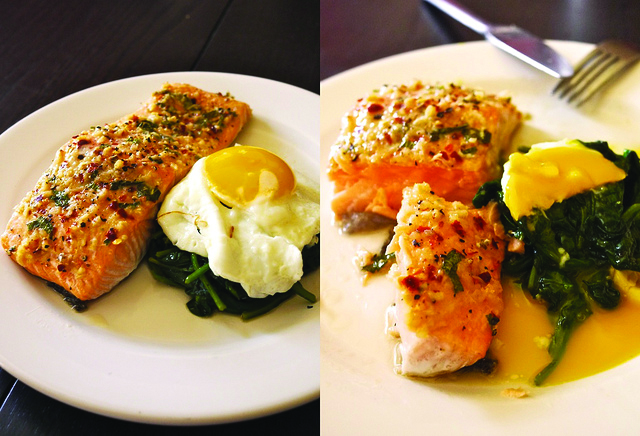
By Emily Skillings (Contributor) – Email
Print Edition: October 8, 2014

Bread lovers beware: yet another popular diet has demonized the carbohydrate. Are you looking to get exceptionally ripped at the slight risk of possibly dying from ketoacidosis? The keto diet offers a fat-burning solution, but only if you can live without those carb-loaded everything bagels from Tim Hortons (and pretty much everything else made of flour).
The keto diet is considerably more challenging than its relatives, the Atkins, Paleo, and South Beach plans, because it requires followers to consume no more than 50 grams of carbohydrates a day. To put that into perspective, just one plain piece of whole grain toast in the morning would be pushing your carb limit at 20 grams. Add a medium double-double coffee before class and you’ve reached a grand total of 42 grams of carbohydrates. A keto adventurer/torture victim would have to be wary throughout the day, as even an apple weighs in at 17 grams of those ever-scrutinized carbs.
This highly restrictive plan will force you to pass on pasta, cookies, and other typically “bad” foods, which could (and likely will) result in dramatic weight loss. But a keto follower will also have to pass on vitamin-packed fruits, which could result in deficiencies. We see just how restrictive the keto plan is when registered dieticians such as Cara Rosenbloom from Canadian Living write that the average person should aim for between 210 and 290 g of carbs per day.
Interestingly, the keto plan encourages full-fat options that are usually forbidden by other weight loss plans. Cheese, butter, nuts, and oils are all fully welcome on a ketogenic plate, as shown on a food pyramid chart on TheKetogenicDiet.org. In addition, you can fill up on leafy greens and beef, poultry, eggs and the king of meat: bacon! Keto could also be the solution for those looking to cut gluten from their lives without going hungry.
As explained in Scientific American, the keto diet throws your body into a starvation mode also called ketosis. Essentially, your metabolism will begin functioning like you’re on a season of Survivor by coping without carbohydrate stores called glycogen. Instead your body uses your fat stores. It’s hard to deny the obvious; if your body is using fat for energy, you will achieve that glorified lean body.
With that hot new body you will likely be able to attract the attention of someone as equally as ripped, but hopefully lacking a sense of smell. The keto diet’s most onerous side effect may be sweet, acetone-like breath. The products of metabolising fat are ketone bodies, a waste product that your body must expel. In extreme cases, a buildup of ketone bodies will result in ketoacidosis, which is fatal. Maybe that’s the worst side effect …
If the bacon-induced abs outweigh the comfort of macaroni and cheese, maybe the keto diet is for you! Just avoid starting keto around exam time, as a student lacking carbohydrates can experience fatigue, irritability, and dreaded “brain fog.” And like any health plan, you should probably ask someone who graduated from medical school before diving into it.

